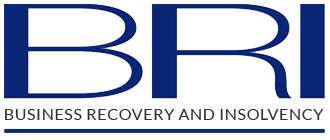Creditors Voluntary Liquidation
When a company has reached the point at which it can no longer trade, a creditors’ voluntary liquidation (‘CVL’) is a common way for the directors and shareholders to choose to close the company.
At BRI Business Recovery and Insolvency, we help companies all over the country when it comes to financial issues. Creditors Voluntary Liquidation is a service that we carry out regularly for companies like yours. For more information please contact our team.
What is a Creditors Voluntary Liquidation?
A Creditors Voluntary Liquidation is a form of company insolvency used when a company is unable to pay its debts and decides to voluntarily close down. It is initiated by the company’s directors, but the creditors play a key role in the procedure and deciding who is to be appointing as the liquidator.
A CVL avoids the need for any court involvement and is handled, most often, without the need to hold a creditors meeting.
Creditors Voluntary Liquidation – What to Expect
Some CVLs result in complete closure of the business whilst others include a phoenix or pre-pack element where the business is sold to a new entity allowing it to trade on debt free.
When you decide that you wish to commence your Creditors Voluntary Liquidation process, here is what you can expect. All of the information and steps below are prepared and planned by BRI on your behalf.
1. Initial Instruction: The company directors initiate the process to instruct BRI when they recognise the company is in or will be in financial difficulty and is insolvent (unable to pay its debts)
2. Board Meeting: Directors formally acknowledge that the company cannot continue trading due to its financial difficulties and put forward resolutions to shareholders to liquidate the business.
3. Notification and report to creditors: Creditors are notified of the impending liquidation, and shortly afterwards, a directors’ report to creditors including a statement of affairs is prepared and sent to them.
4. Meeting of Shareholders: During the shareholder meeting, a special resolution is passed to place the company into liquidation.
5. Deemed consent procedure or creditors meeting: Creditors interact in various ways depending upon the route chosen to put the company into liquidation. If a deemed consent procedure is initially chosen, then a meeting is only held if creditors request it. Otherwise, a virtual meeting can be held to consider who the creditors wish to appoint as liquidators.
6. Liquidator’s Duties: In this case, we would be responsible for:
- Realising and selling the company’s assets to repay creditors.
- Investigating the company’s financial affairs, including the conduct of directors.
- Distributing any remaining funds (after costs) to creditors in the statutory order of priority.
7. Company Dissolution: Once all assets are realised and creditors are paid as much as possible, the liquidators are released from office, and shortly afterwards, the company is dissolved and ceases to exist.
Benefits of a Creditor Voluntary Liquidation
When it comes to company insolvency, there are various ways in which you may want to proceed for your company. Some of the benefits of going ahead with a CVL are;
- Control: Directors take proactive steps to address the company’s financial issues rather than being forced into compulsory liquidation by a creditor or HMRC.
- Creditors: You no longer have to take calls or deal with creditors, BRI do that for you.
- Support: Once the CVL is underway, the company’s affairs are managed by the liquidators, BRI, and we can provide support to make it as stress free as possible.
- New chapter: By freeing yourself of the burden of running the company, you can focus on moving forward in whatever way you prefer.
Work With BRI
If you have questions about your company or are looking for some support when it comes to creditors’ voluntary liquidations, then contact our team today. We work closely with our clients to ensure they have all the information they require and the support they need in order to make an informed decision on which route is best for them. We agree on your preferred date for liquidation and hold your hand throughout the process, ensuring that all procedures are complied with so that you can focus on moving forward. Contact us if you would like further information and assistance regarding any aspect of liquidating your company. There is no charge for doing so; it is done in confidence and without obligation.
